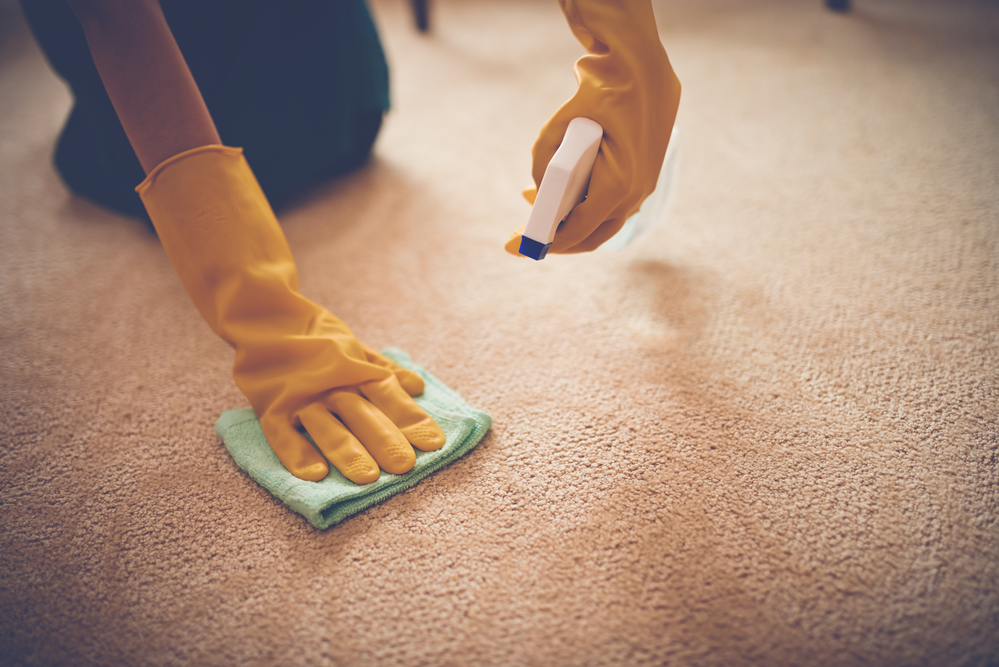A Guide to Different Stain Types and Removal Techniques

Stains are more than just unsightly marks on the furniture or flooring—they represent complex chemical reactions between substances and fibres. It’s for this reason that understanding how different types of stains interact with fabrics is crucial for effective removal. Successful stain removal often depends on quick action and applying the correct treatment method.
Before attempting any type of stain removal, it’s essential to work out what caused the stain and what you need to tackle it without causing further damage.
Understanding Stain Categories
Stains can be classified into several distinct categories, each requiring specific treatment approaches. Protein-based stains, such as blood, egg and dairy products, contain organic compounds that react to heat and require careful treatment with cold water.
Tannin stains, such as coffee, tea and wine, contain natural dyes that can permanently bond with fabric fibres if they’re not treated promptly. Oil-based stains, on the other hand, create a barrier between the fabric and cleaning agents, which can make them particularly challenging to remove.
Dye stains, like grass and ink, contain pigments that penetrate fabric fibres deeply. Lastly, combination stains, such as pizza sauce or chocolate, require multiple treatment approaches as they contain various staining elements.
General Stain Removal Principles
Before applying any cleaning solution, whether it’s commercial or a homemade solution, always test it on an inconspicuous area to ensure it won’t damage the fabric. Temperature plays a vital role in stain removal—some stains respond best to cold water, while others require warm or hot water treatment, as we’ll cover later in the blog.
The technique of blotting rather than rubbing is crucial, as rubbing can spread the stain and damage fabric fibres. Common mistakes to avoid include using hot water on protein stains, allowing stains to dry completely, and applying bleach directly to coloured fabrics, as these can all cause bigger problems.
Room Temperature Water Stains
Fresh produce stains, such as beverages or mud, typically respond well to room temperature water treatment. For these stains, begin by removing any excess material and then gently wipe the area with room temperature water, working from the outside of the stain toward the centre. Beverage stains should be treated immediately by blotting with a clean cloth, followed by applying a mixture of water and white vinegar. Mud stains, on the other hand, should be allowed to dry completely before brushing off excess dirt and treating with a detergent solution.
Cold Water Stain Removal
Blood, dairy products, and egg stains require immediate cold-water treatment. Never use hot water on these protein-based stains, as heat will cook the protein and set the stain permanently. For blood stains, immediately rinse with cold water and apply hydrogen peroxide if the fabric is white, or an enzyme-based cleaner for coloured fabrics. Dairy stains should be scraped off and treated with cold water and detergent. Egg stains require similar treatment, with special attention to removing all protein residue before cleaning the fabric or carpet properly.
Hot Water Stain Removal
Oil-based stains from cooking or cosmetics respond best to a combination of hot water and an appropriate cleaning agent. Begin by applying a commercial grease-cutting detergent or dish soap directly to the stain. For cooking oil stains, pre-treat with dish soap and allow it to sit for several minutes before washing in the hottest water you can that’s safe for the fabric. Cosmetic stains often require a combination of oil-dissolving pre-treatment and hot water washing. Always check the fabric care label to ensure the item can withstand hot water treatment before you begin.
Stains Requiring Special Treatment
Certain stains require specialised approaches due to their unique chemical compositions. Ink stains often respond to alcohol-based solutions or specialised ink removers, for example, while rust stains require specific rust removal products, as standard cleaners may set the stain permanently. Paint stains can also require different treatments depending on whether they’re water-based or oil-based—water-based paints can often be removed with water while still wet, while oil-based paints require mineral spirits or paint thinner.
When to Seek Professional Help
Some stains require professional expertise, particularly those on delicate fabrics, antique items, or when home remedies have been unsuccessful. Professional cleaners have access to specialised products and techniques that aren’t always available to consumers. They can also handle difficult fabrics like silk, wool, and leather that may be damaged by home treatment methods.
To book our professional cleaning services, contact Apple Clean today.
